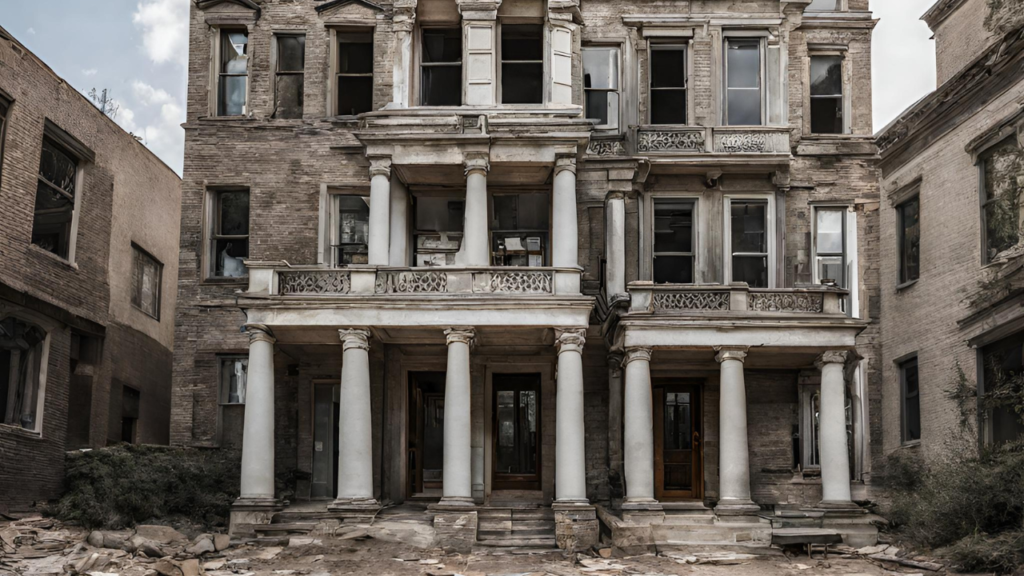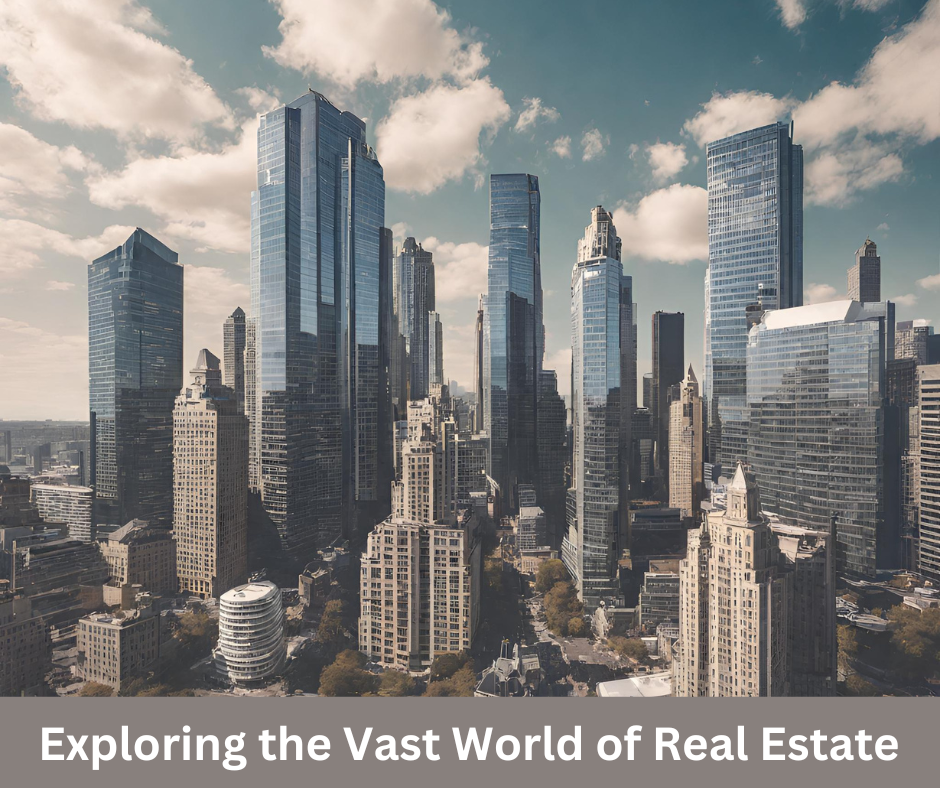Real estate encompasses the buildings and lands across both rural and urban landscapes that provide space for human shelter, commerce, recreation, and development. As an asset class, real estate also represents a major portion of global wealth. This deep dive explores the expansive real estate industry across multiple dimensions.
Foundational Aspects of Real Estate
Some key foundational elements help define the scope of the real estate sector:
Tangible Assets
As tangible property, real estate constitutes fixed physical buildings and lands with inherent durability and spatial utility.
Localization
Location fundamentally shapes real estate utility and valuations based on geographic desirability factors and proximity benefits.
Market Variations
Major differentials emerge between regions and countries based on climate, economy, demography, wealth, regulations, materials, cultural priorities and other variables that shift supply and demand dynamics.
Asset Classes
Real estate subsectors range from residential to retail, industrial, office and specialty assets – each with distinct demand drivers, investment profiles and participant mixes.
Cyclical Industry
Real estate markets go through periodic booms, bubbles and busts in valuation and development activity tied to macroeconomic cycles and conditions.
While sharing certain common attributes, real estate markets manifest through highly differentiated vehicles for shelter, income, and growth grounded in the particular places they inhabit.
Dimensions of Real Estate Markets
Real estate as a composite sector encompasses an extensive range of property types:
Housing
Residences range from single-family homes to condominiums to apartments, providing living space for individuals and households.
Retail
Storefronts and shopping centers offer retail commerce space for businesses selling goods and services to consumers.
Offices
Office buildings and corporate parks cater to companies, non-profits and government agencies housing their operations.
Industrial
Warehouses, factories, data centers and flex spaces provide facilities for logistics, manufacturing and storage.
Hospitality
Hotels, motels, and resorts deliver temporary hospitality accommodation and services for travelers.
In addition, niche assets like self-storage facilities, medical buildings, trailer parks and event venues fall within the real estate umbrella as well. The diversity across building functions translates to a nuanced market.
Real Estate Industry Participants
Myriad stakeholders partake in the expansive real estate ecosystem including:
Owners
A vast array of individuals, investment funds, companies and government entities own property for occupation or income investment.
Developers
Real estate developers assemble land, financing and contractors to undertake new building and community projects.
Operators
Property managers, asset managers, and strata councils handle day-to-day administration like maintenance, improvements, and basic financial oversight of assets.
Occupants
The spectrum of tenants renting or leasing space includes residents, retail shops, small businesses, major corporations, and institutions like schools and medical facilities.
Service Providers
A broad supporting cast including brokers, appraisers, inspectors, contractors, architects, insurance companies, and more enable real estate transactions and property operations.
The diversity of stakeholders sustains vibrant yet highly interdependent real estate markets.
Forces Reshaping Real Estate
Evolving economic, demographic, and technological forces continuously transform the real estate landscape:
Location
The age-old mantra “location, location, location” still determines property desirability and asset incomes highlighting intricacies between sites and shifting neighborhood fortunes.
Population
Demographic factors like aging baby boomers, emerging millennial households and immigration patterns reshape housing priorities while employment levels impact office and retail space needs.
Design
Sustainable materials, space efficiency priorities, automation capabilities, wellness, and aesthetic considerations continually update building design.
Finance
Interest rates, capital flows, taxation, and lending requirements cycle dramatically impact buyer access, developer feasibility, and real estate market volatility.
Regulation
Zoning policies, building codes, health standards, and environmental regulations at multiple government levels add complex legal dimensions to the real estate industry.
While core human needs for shelter and gathering spaces endure, the momentum of change innate to property markets and buildings remains ceaseless.
Real Estate Professional Services
Several professional specializations provide services enabling real estate investment, development, and asset performance:
Brokerage
Brokers facilitate sales, purchases, and leasing transactions for clients while managing listing marketing and buyer or tenant negotiations.
Appraisal
Estimating property market values provides crucial benchmarks for pricing, financing, investment analysis and taxation.
Inspection
Inspecting building systems, structures, materials, and lands determines maintenance needs and evaluates risk exposures for stakeholders.
Investment
Equity finance partners provide the capital enabling property acquisitions, developments and value-enhancing undertakings.
Asset Management
Oversight of income properties involves optimizing building operations, maintaining assets, enhancing returns, and guiding future positioning.
Research
Real estate market analysis provides clients and stakeholders with critical data intelligence underpinning strategy and decision-making through changing cycles.
These services constitute integral strategic inputs enabling owners, developers, and regulators to navigate intricate real estate industry complexities.
Property Investment Fundamentals
For many buyers real estate also represents an income-generating investment vehicle with intricate risk and return profiles:
Cash Flows
Ongoing rental income from tenants funds operating expenses, and debt payments and delivers potential profit. Income potential varies dramatically based on asset class, location, and market conditions.
Appreciation
Property values over time often appreciate allowing for profitable sales. But market corrections can also erase or diminish gains making this form of return less reliable on its own.
Leverage
Typically only 20-25% equity is required for purchases that use loans for the balance enabling greater potential returns through debt financing options.
Tax Advantages
Favorable tax treatment including deductions and deferrals on transactions lowers investor and owner tax burdens providing helpful savings.
Total investor returns result from complex interactions between rents, appreciation, leverage strategies, management capabilities, and holding durations aligned with cycle timing. Real estate deals turn on meticulous analysis probing these intricacies.
The Essence of Home and Place
Beyond mere financial descriptors, the social and psychological essence of homes and gathering places powerfully impacts lives and memories:
Shelter
The most fundamental purpose of residential real estate is to provide families and individuals with protective refuge and nurturing domestic spaces allowing human life to unfold.
Stability
Lengthy average home tenures cultivate profound personal connections with spaces interwoven with key events and relationships that dwell in memory.
Status
Property ownership and assets historically conferred social status and symbolic success in many cultures. The display still signals standing and achievements for some.
Belonging
Shared spaces like religious buildings, schools, social clubs, and even retailers can shape community bonds and emotional connections through collective experiences.
Identity
Homes and neighborhoods shape personal identity development in formative years while consciously curating spaces reflect aesthetic tastes and values.
Economic descriptors of real estate as an asset class risk missing deeper social, cultural and psychological dimensions that fundamentally structure human existence.
Real Estate Through Time
While often viewed as solid and enduring, physically manifest real estate morphs continuously over longer time horizons:
Shifting Fortunes
The most prestigious and prosperous neighborhoods and properties continuously change over decades and centuries as cities economically and demographically transform.
Redevelopment
Buildings and infrastructure are periodically replaced or updated to serve evolving preferences, technologies, and regulations. The rate of physical turnover varies dramatically by place.
Value Fluctuations
Just as structures change over time, economic values tied to real estate dynamically cycle through booms, crashes, and plateaus resisting any notion of perpetual stability or continuous growth.
Adaptive Reuse
While frequent teardowns characterize many areas, existing buildings also commonly morph functions converting churches to condos or warehouses to tech hubs as cities reinvent themselves.

Vanishing Acts
Inevitably buildings and sometimes even whole communities eventually fade into history through disasters, shifting economic tides, or redevelopment schemes.
Despite the tangible, visual dominance of real estate across every settled landscape, the built terrain continually reinvents itself over generations – with or without human intent.
Governing Real Estate
From the village to the global scale, governing frameworks shape real estate utilization:
Zoning
Land use and density zoning protections separate industrial areas from schools and homes while allowing higher-density development in commercial zones.
Building Standards
Construction and safety codes standardized across regions provide assurance for buyers and aim to minimize risks like electrical fires or seismic collapses.
Environmental Regulations
Developers and owners must comply with habitat, emissions, waste and toxicity rules that vary significantly between jurisdictions.
Affordability Policies
Some municipalities enact affordable housing quotas for new projects or provide public housing while tax policies incentivize the rehabilitation of derelict buildings.
International Investors
Global capital flows into major property markets like New York and London along with procedural easing allowing more foreign purchases to increasingly decentralize governance.
The policy landscape constitutes a vital yet oft-invisible force steering real estate markets down certain paths while obstructing others for better or worse across communities.
Property Markets Going Forward
In looking ahead, technological and social innovations hold the potential to dramatically reshape real estate sectors:
Smart Infrastructure
Developments embedded with sensors and automated systems and appliances can optimize energy usage and monitor occupant health.
Experiential Places
Mixed-use districts and spaces integrating unique activities beyond shopping aim to promote lingering, engagement and human connectivity as online retail grows.
Alternative Ownership
Shared equity models and communal living configurations with larger shared spaces try to bridge access and affordable housing gaps, especially in expensive cities.
Circularity
Innovations in materials science, prefabrication, and design open possibilities for eventually fully reusing or upcycling building components after initial lifecycles.
Virtual Spaces
Virtual and augmented reality spaces layer digital experiences and remote participation onto physical places while data-sharing platforms distribute asset access.
As much as real estate anchors society in the physical present, an openness to reimagining embedded spaces, structures, and systems can seed alternative property futures.
The Essence of Place
Stepping back, the way humanity utilizes finite land and crafts shelters upon it offers a window into the spirit of cultures. Across history and geography, the built terrain reveals what groups value, how they gather, and who they aspire to be through architectural expressions of identity, memory, and purpose manifested spatially across the land. In this sense, the historic warehouses, neon mega towers, and suburban cul-de-sacs dotting the inhabited world reveal far more than heights, materials and footprints alone reflect.
Ultimately real estate constitutes the spatial scaffolding framing the human condition – shaping our days and years while impacting economic outcomes, household stability, community belonging, ecological footprints, and the directionality of lives. For this reason, the past, present, and future of property remain the concern of all who dwell in the buildings and neighborhoods furnishing both existence and imagination.

The decisions societies and individuals make amidst stark challenges from unaffordability to sustainability regarding how to physically construct, govern, and inhibit shared viable spaces will reverberate for generations. The stakes span both pragmatic and existential dimensions.
Few terrestrial matters ultimately involve more money, concrete, policies, emotions, atoms, and dreams than the formidable world of real estate that envelops societies across the globe. Thus the enormity of the industry appropriately mirrors its multifaceted imprint on the state of human affairs.

